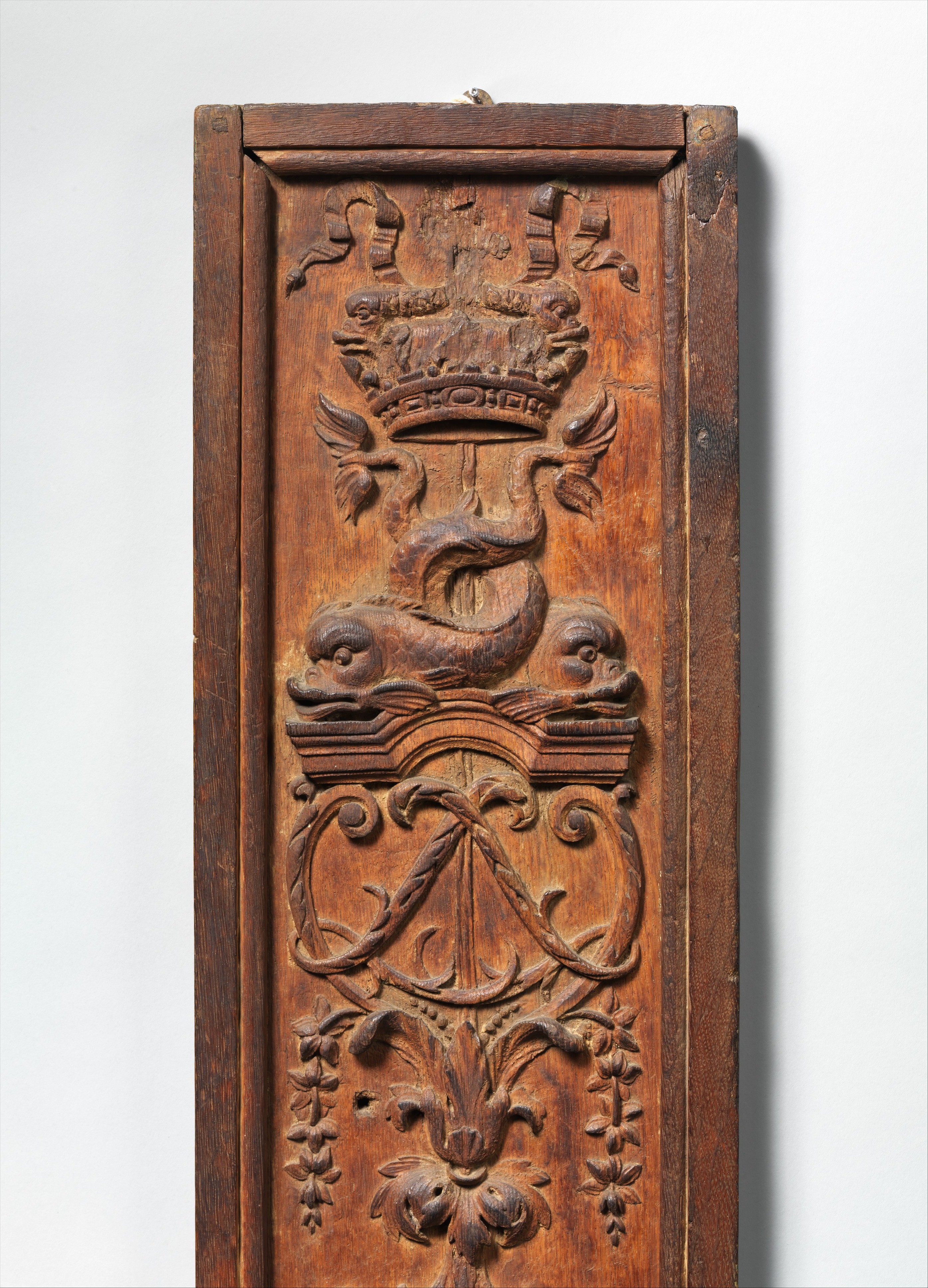Pilaster panel
Not on view
This tall and narrow panel is symmetrically carved at the top with a crown above dolphins with intertwined tails, referring to the French dauphin or heir to the throne. In addition, there are crossed L’s and the lyre of Apollo, a symbol often associated with the Sun King, as well as floral decoration. Traces of the French lily or fleur de lys remain at three different places. Symbolizing the French Crown, these motifs were most likely removed during the French Revolution. All these insignia strongly suggest that the panel, now stripped of its original surface paint layer, came from a royal building. The frame appears to be a later addition.
This piece was once part of the model collection of woodwork, paneling, and seat furniture of Maison Leys, a successful decorating business, located at the Place de la Madeleine in Paris. Since 1885 the business was directed by Georges Hoentschel who installed the collection in 1903 in a museum-like display at Boulevard Flandrin, Paris. Three years later, Hoentschel sold the collection to J. Pierpont Morgan who gave the panels with the rest of the decorator’s seventeenth and eighteenth century objects to the Metropolitan Museum of Art in 1907.
This image cannot be enlarged, viewed at full screen, or downloaded.
This artwork is meant to be viewed from right to left. Scroll left to view more.



